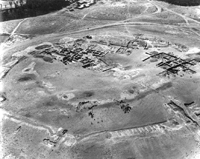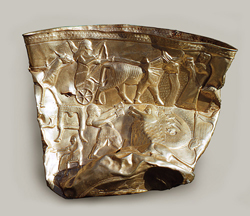
The project takes its name from the site of Tepe Hasanlu, located near the modern Iranian city of Mahabad. It is the largest site in the Gadar River Valley, which runs from the Zagros mountains on the west to the marshy southern shore of Lake Urmia at the east. The valley provides a direct route from the border of Assyria on the west to highland Iran on the east. Occupation in the region extends from the sixth millennium B.C. through ca. 800 B.C., when a violent attack, possibly led by an army from the neighboring Urartu kingdom, destroyed the citadel.

The excavations of Hasanlu ran from 1957 through 1977, and were sponsored by the University Museum, the Archaeological Service of Iran, and the Metropolitan Museum of Art, with the overall direction provided by Robert H. Dyson, Jr., former Director of the Museum and Curator Emeritus, Near Eastern Section. The Hasanlu Project involved from the outset the study of more than just the main site, and preliminary soundings and excavations were also carried out at neighboring sites, including Hajji Firuz, Dalma Tepe, Pisdeli Tepe, Dinkha Tepe, Agrab Tepe and Qalatgah among others. The early Iron Age levels of Hasanlu and other neighboring sites excavated by the Hasanlu Project played a central role in defining the Iron Age chronology for Western Iran.
The syncretistic nature of the architecture and artifact assemblages at Hasanlu may be understood by recognizing its location on trade routes leading from the kingdom of Urartu in the north, from Assyria and Syria to the west, and from Mannea and Media to the southeast. These trade routes facilitated the movement to this area of materials, objects, craftsmen, teachers, and officials from neighboring centers. Among the discoveries in the destruction level, which contained the remains of 240 inhabitants, was a golden beaker, now in the National Museum of Iran, which features repoussé decoration of mythological scenes.
